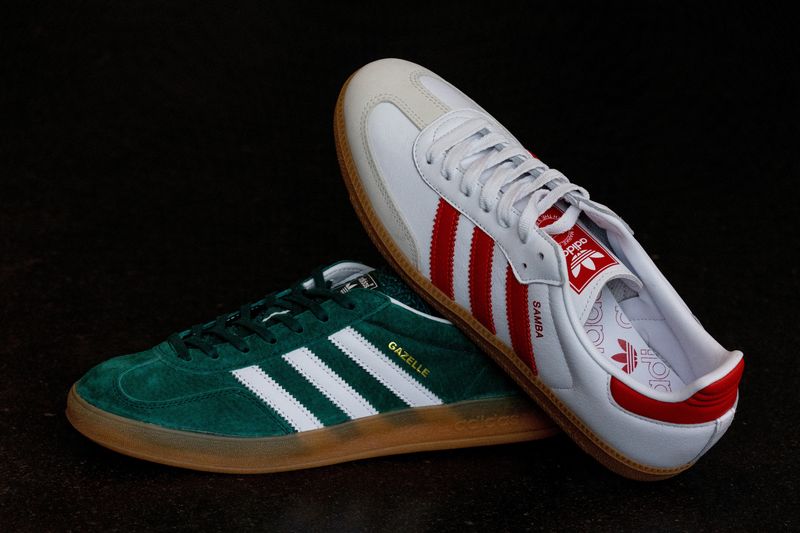Analysis-As Nike struggles, Adidas must surf Samba wave with caution
2024.10.08 01:11
By Helen Reid
LONDON (Reuters) – Nike (NYSE:)’s ongoing struggles are giving Adidas (OTC:) a chance to keep taking market share from its larger U.S. rival, but the German brand will have to work harder to keep shoppers interested in its key Samba and Gazelle terrace sneakers.
The shoes have boosted Adidas sales over the past year, and analysts expect it to report third-quarter revenues of 6.4 billion euros, a 10% increase on a year ago in currency-adjusted terms, when it reports earnings on Oct. 29.
But, more than a year into the trend, the Samba won’t remain the “it shoe” for much longer, industry experts say.
“The sneakerheads, the more fashion-forward consumer, they already have the shoes. We’re now looking at them (Adidas) milking the rest of the trend on the way down by introducing lower price points within terrace,” said Aneesha Sherman, analyst at Bernstein.
“They can still get a tonne of growth out of that because there are still laggards who don’t have these shoes yet or maybe didn’t want to pay the $100 price point but are willing to pay a $60 price point,” she added.
In a bid to attract shoppers who want to buy into the trend but still want to feel unique, Adidas has kept churning out new colourways for the Samba, Gazelle and Spezial, with some models featuring tongues like football boots, and contrast stripes in new materials like velvet.
That has kept third-party retailers like JD (NASDAQ:) Sports happy for now. At half-year results on July 31, Adidas CEO Bjorn Gulden said the brand was still “chasing demand” from retailers.
“There’s always this push and pull, the consumer wants more, retailers want more, but the brand has to step back and say we’re going to dial this back to make sure we preserve it for a long time,” said Matt Powell, sneaker industry expert and senior advisor at BCE (NYSE:) Consulting.
“Adidas would be right to really tap the brakes on the Samba and Gazelle, to make sure they promote the sell-through,” he said. Sell-through refers to the percentage of product a retailer sells after receiving it from a supplier.
There are signs the brand’s focus is shifting onto other shoes like the Campus and the SL72 “retro running” sneaker, while Stella McCartney’s Paris Fashion Week show featured a new Adidas shoe modelled on motorsport racing shoes, tapping into the growing trend around Formula 1, which last week announced a 10-year partnership with luxury group LVMH.
Adidas can also no longer rely on strong revenues and profits from its remaining stock of Yeezy sneakers, as demand for the shoes designed by disgraced rapper Kanye West has fallen. In August, an Adidas mail to its sneaker club members advertised discounts of up to 70% on Yeezys.
Still, with Nike withdrawing its annual guidance and signalling a weak holiday trading season as a new CEO takes the helm, Adidas has a unique opportunity to grow, especially in the U.S. where Nike is especially dominant and Adidas was highly reliant on its Yeezy range.
In Europe, Adidas has taken market share over the past year while Nike’s share has fallen, according to direct to consumer sales data from Consumer Edge which also shows significant gains by On Running, Puma, and Hoka.

Bernstein’s Sherman expects Adidas to keep gaining share for the next year, as it will take time for Nike to turn its performance around.
“It could change, if Nike were to put out a strong lifestyle shoe in the spring, and if that were to catch and gain some traction in the summer, we could see a shift – where the it shoes of summer 2024 were the Samba and Gazelle, the it shoe of next summer could be something from Nike,” she said.









